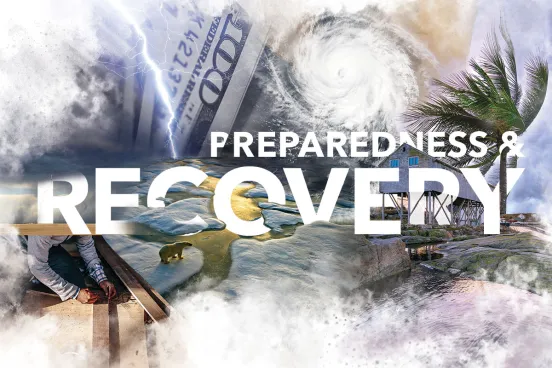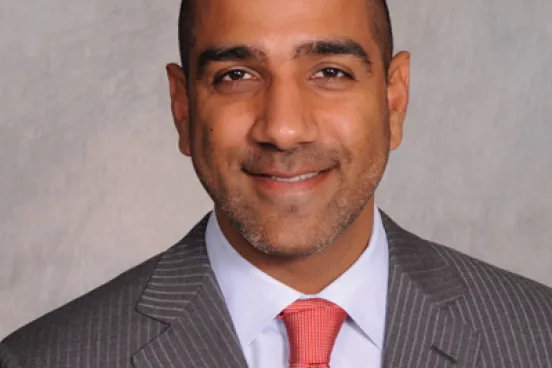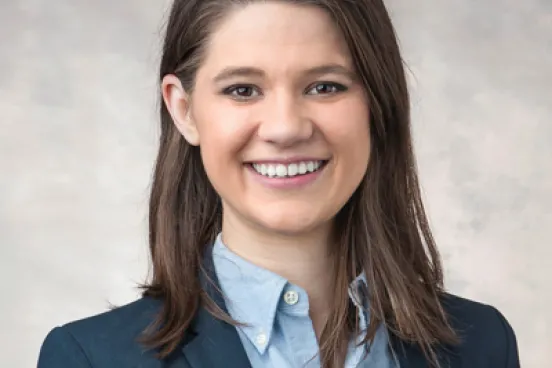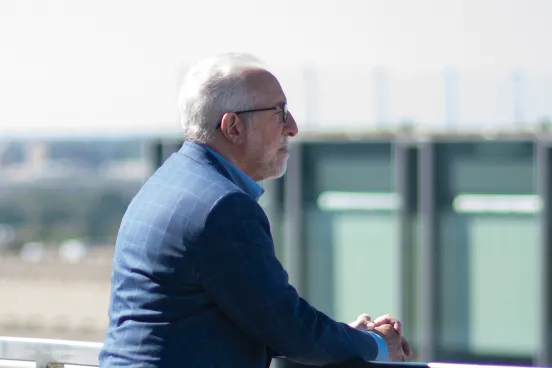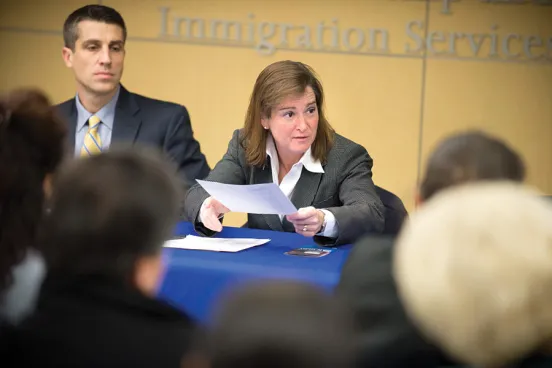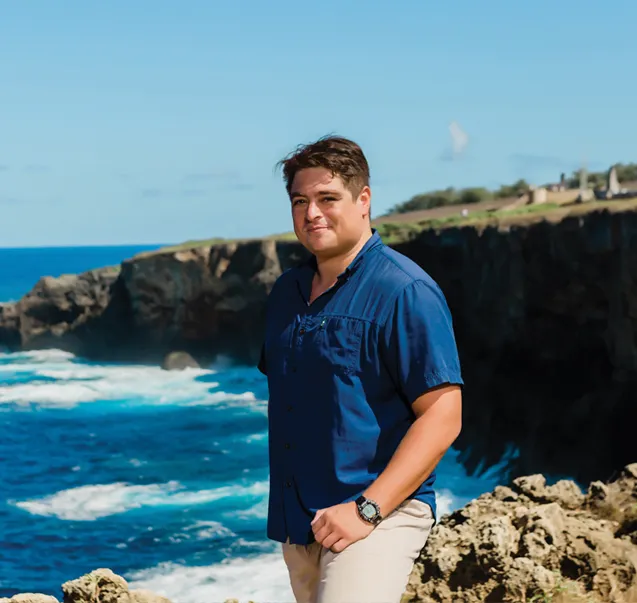
A few years out of law school and itching for a new adventure, Hessel Yntema IV, ’13, was working as an assistant city attorney in his hometown of Albuquerque, New Mexico, in April 2017 when an unusual job advertisement caught his eye.
“I thought, ‘I could be an assistant attorney general on Saipan. That sounds like fun,’” Yntema says. He submitted an application, sailed through a Skype interview, and, less than three months later, found himself traveling halfway around the globe to the Northern Mariana Islands. The trip itself took 23 hours, and when he stepped off the tiny propeller plane that carried him on the last leg of his journey, he felt very far away from the New Mexican desert or the snow of Ann Arbor.
“As soon as I walked outside, the humidity hit me,” Yntema says. “There were banana and coconut trees…the hottest day in Ann Arbor is every day here.”
The largest island in a limestone and volcanic archipelago nearly 4,000 miles west of Hawaii, Saipan is home to about 49,000 people spread over an area the size of San Francisco. Many make their living in the tourism industry, and with its clear waters, clean sandy beaches, and picturesque cliffs, Saipan is a classic island paradise. But as Yntema found, that doesn’t mean there isn’t plenty of work for a dedicated attorney.
“As soon as I got here, I was drinking from a firehose because there was a U.S. Supreme Court case regarding the commonwealth’s sovereign immunity,” he says. “The guy who would have been the solicitor was conflicted out, so I actually submitted a brief in opposition to cert to the U.S. Supreme Court as a fourth-year attorney, which was kind of exciting.”
The Northern Mariana Islands are a commonwealth of the United States, a U.S. territory that reserves some of its own rights to self-governance. The details of that relationship are a sensitive subject with local residents, and Yntema had to get up to speed quickly.
“The position of the commonwealth is that, while the United States is sovereign, it’s a kind of co-sovereign,” Yntema explains. “We’re a ‘commonwealth in union with the United States.’ Saipan never was a U.S. colony. We have our own customs department, which I happen to be attorney for. We have our own tax and revenue department, and if you’re a permanent resident here, you do not pay taxes to the United States.”
The islands also have their own unique culture, with strong emphasis placed on preserving the indigenous Chamorro and Carolinian languages. The dress code, even for government attorneys, is casual—Hawaiian-style shirts with khakis (a coat and tie, however, are still expected in court). The population is close-knit and interrelated, which can sometimes complicate litigation.
“It isn’t just when your client has the same last name as the judge that you have to check for a possible conflict,” Yntema explains. “The island is so small that our federal judge is married to one of our three justices on the State Supreme Court.”
In addition to the customs department, Yntema serves as general counsel for the islands’ departments of public safety, fire and emergency medical services, corrections, and homeland security, along with the parole board. His litigation docket includes medical malpractice and civil rights cases, and he frequently has stepped in to help other attorneys on issues ranging from extradition to free speech. It’s a busy schedule, but Yntema also finds time to teach criminal justice courses at the community college, help local high school students with college prep, and coach a children’s water polo team at the Saipan Swim Club.
“He has acclimated to island life quickly, which is rare,” says Charles “Ned” Brasington, the Northern Marianas’ chief solicitor and a good friend. “It is hard for most mainlanders to come to terms with the lack of certain amenities.”
Food and other basics are expensive, and it can take months to receive a package from the mainland. But the hardest thing, Yntema says, is that the time difference—Saipan is 17 hours ahead of Albuquerque—makes it hard to stay in touch with friends and family. Still, Yntema credits much of his adaptability to the time he spent in his mother’s native El Salvador, which has a similar climate and significantly greater depths of poverty.
In 2015, Saipan was nearly destroyed by Typhoon Soudelor. It took months to rebuild the power and telephone grids, and some families still live without reliable electricity.
“It’s always at the back of everybody’s mind,” Yntema says. “You can’t talk with anybody who was here during the hurricane for more than an hour and not have it come up.”
Saipan is geologically unique in that plate tectonics are actually pushing it higher, so rising sea levels due to climate change are less of a concern than they are for many Pacific islands. However, according to the U.S. Global Change Research Program, the climate will likely get hotter and dryer, meaning warmer oceans will threaten the area’s coral reefs, freshwater resources may be affected by saltwater intrusion, and migration from flooded islands may cause turmoil. Islanders worry most about the increasing frequency and severity of typhoons, and Yntema’s client, the Office of Homeland Security and Emergency Management, is working to mitigate the threat as best it can, including replacing wooden utility poles with concrete.
On days when the weather is clear, however, Saipan remains an island paradise.
“Every Saturday or Sunday after brunch it’s, ‘Let’s go to the beach,’ and you just hang out there for four or five hours,” Yntema says. “There’s a crystal-clear coral lagoon where you can walk out half a mile. I do an ocean swim once a week past two American tanks that were sunk during World War II. Now the fish from Finding Nemo—clownfish and blue tang—as well as angelfish live inside them. The water is 82 degrees year-round.”
Yntema laughs when he imagines what his 22-year-old self would think about where he wound up. Despite a family legacy in law—his great-grandfather, Hessel Yntema, was a renowned Michigan Law professor—he originally planned to become a field geologist. But after a year of working at an MIT lab, Yntema decided that he didn’t want to spend his life working for oil companies in remote locations.
“As a geologist, you go where the oil company or the grant sends you,” he says, “and I wasn’t thrilled about living in a compound off the coast of Africa. When I was 22, I wanted to be in a city, New York or London. But here I am now. Things change!”


